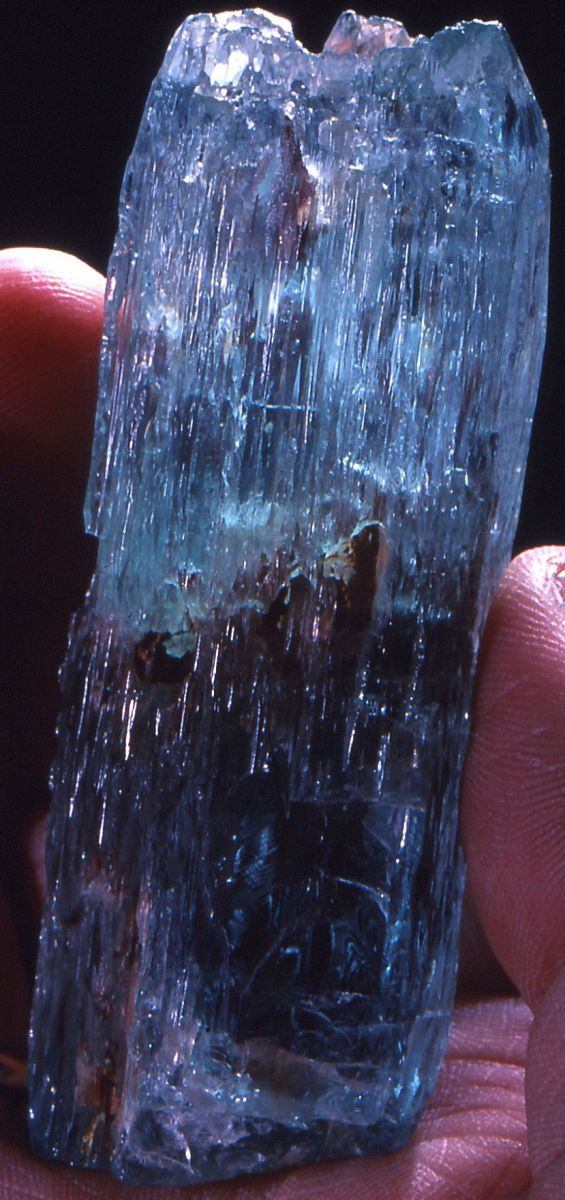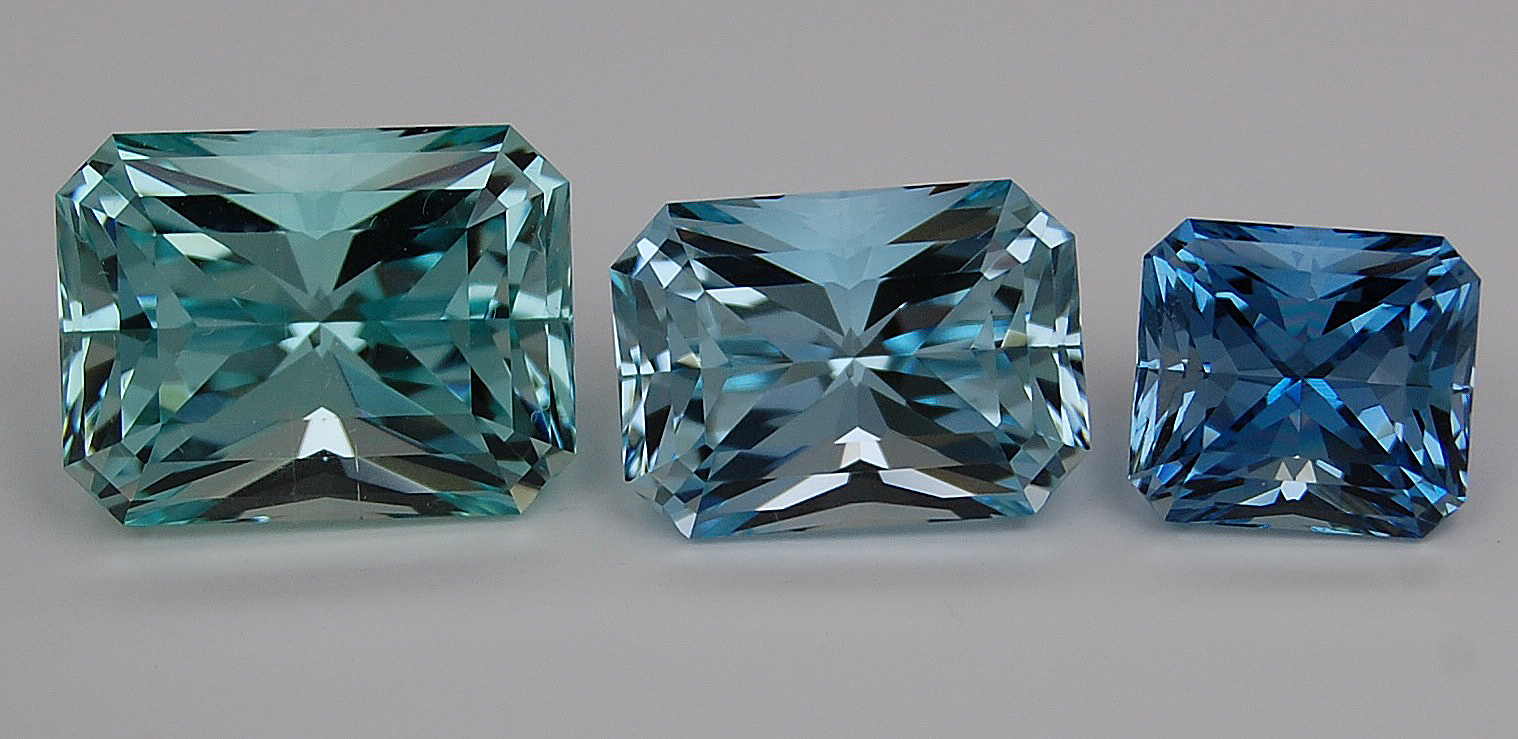

Introduction: Aquamarine is a variety of the beryl species. Pictured on the left is an etched aquamarine crystal from Brazil. The cut stones from left to right weigh 18.18 ct from Brazil, 11.63 ct from Brazil and 6.75 ct from Zambia.
Colors: blue, greenish-blue through bluish-green. Most aquamarines range from extremely light to medium in tone although there are exceptional stones that may be considered medium-dark.
Clarity: Aquamarine has Type I clarity. By definition, gems of this type grow extremely clean in nature and usually have no eye visible inclusions. Typical inclusions are long hollow tubes. If these tubes are properly oriented when cutting en cabochon, it will display a cat’s eye.
Stone Sizes: Aquamarine frequently forms as large crystals capable of cutting stones in the hundreds of carats. Aquamarines of this size are wonderful for collections and museum displays but have limited use in jewelry so larger gems have a slight decrease in price per carat compared to the same quality aquamarines used in jewelry.
Localities: Gem aquamarines is found in many worldwide localities. Some of the better known sources are:
-Brazil: perhaps one of the best known localities for aquamarine. The famous Rocha aquamarine yielded over 300,000 carats of fine gemstone material from a single crystal weighing 61 kg.
-Nigeria, Madagascar, Mozambique, Zambia, Namibia, China and Pakistan. The Pakistani locality, near Skardu, has produced exceptional and very aesthetic mineral specimens often associated with mica in matrix. The value of these aquamarines are higher as mineral specimens than as cutting rough as the cut stones are very light to light in tone and have a lower price per carat.
-United States: There are several states that produce aquamarine. New Hampshire and Colorado are probably the better known U.S localities although none compete with any of the worldwide sources.
Treatments:
-Heating (H) is done to convert any ferric iron that imparts a yellow color to ferrous iron which imparts the more commercially desirable blue color. This treatment is routinely done and is stable. The treatment is undetectable but assumed in all blue aquamarines.
Gemology:
-Refractive Index: 1.577-1.583 (+/- 0.017)
-Birefringence: 0.005 to 0.009
-Optic Character: Doubly refractive, uniaxial negative
-Dispersion: 0.014
-Specific Gravity: 2.72 (+0.18, -0.05)
-Hardness: 7.5-8
-Toughness: good
-Chemical Composition: Be3Al2Si6O18
-Cause of Color: Iron
-Absorption Spectra: indistinct lines at 537 and 456 nm and a strong line at 427 nm
-Fluorescence: Inert
-Cleavage: Indistinct in one direction and almost never seen.
-Phenomena: Chatoyancy (somewhat common), Asterism (very rare)
Name: Aquamarine comes from the Latin for sea water.
Dates: Aquamarine is the birthstone for the month of March and the 19th anniversary gemstone.
Care: The ultrasonic and steam cleaner are generally safe unless the gem has liquid inclusions. Warm, soapy water is always safe.
To see available aquamarines, click here
